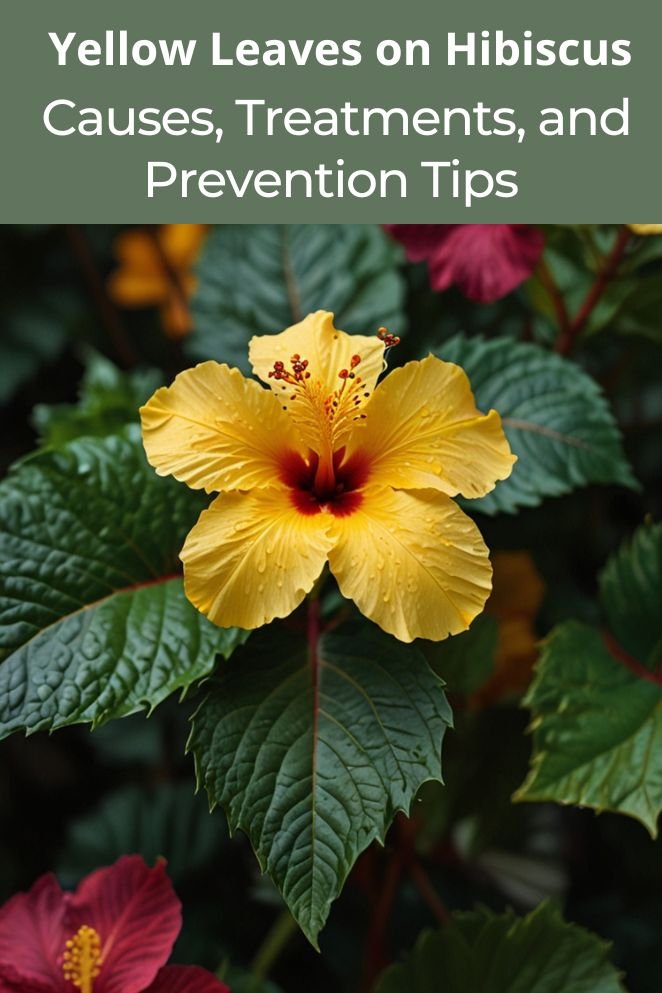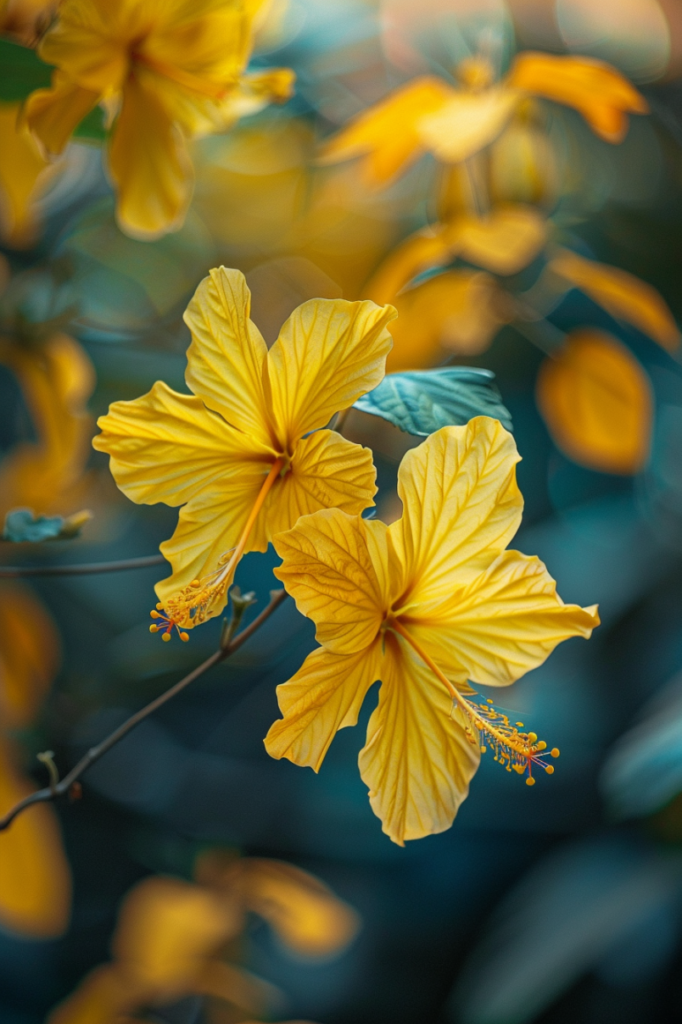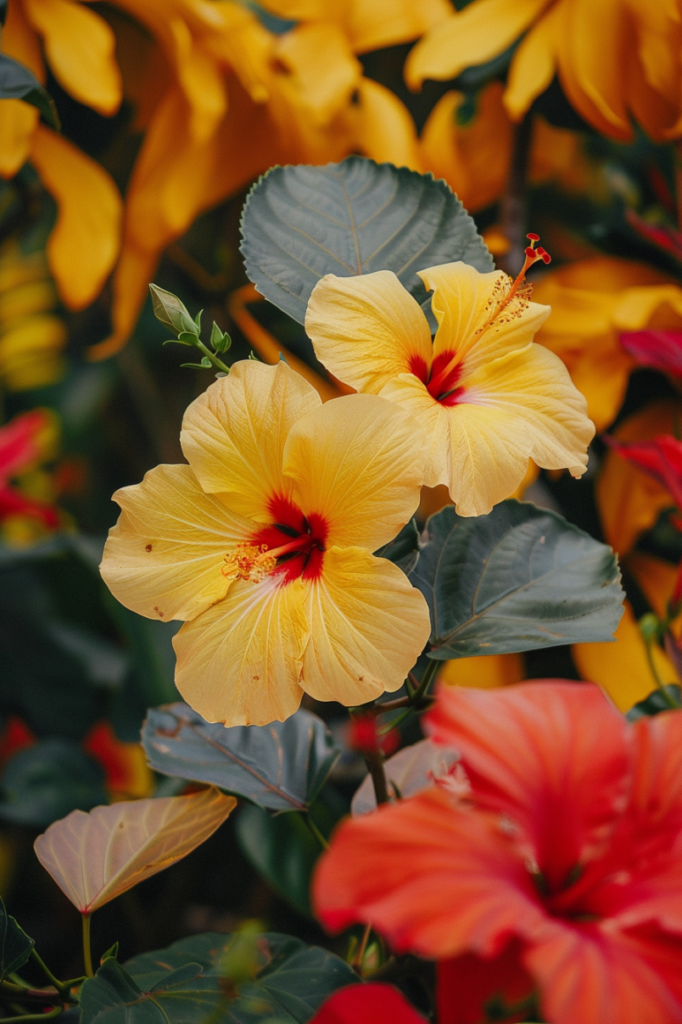
Hibiscus plants are known for their vibrant, showy flowers and lush green leaves.
However, if you notice your hibiscus leaves turning yellow, it can be a cause for concern.
Yellow leaves on hibiscus can be a sign of various issues, from watering problems to nutrient deficiencies.
In this article, we will explore the common causes of yellow leaves on hibiscus, provide solutions for each cause, and offer prevention tips to keep your hibiscus healthy and thriving.
Common causes of yellowing leaves
Yellowing leaves on hibiscus plants can be a distressing sight, but understanding the underlying causes can help address the issue effectively.
Let’s delve deeper into the common factors contributing to yellow leaves:
Watering issues
Overwatering
Excessive watering can suffocate the roots, leading to root rot and yellowing leaves.
Signs of overwatering include soft, mushy leaves and a waterlogged soil texture.
Ensure proper drainage and allow the soil to dry out slightly between watering sessions.
- Read also: Diagnosis and Solutions: Snake Plant Leaves Turning Yellow
- Read also: Sculpting Elegance: A Guide to Desert Rose Plant Pruning
Underwatering
Conversely, underwatering can also cause yellowing leaves as the plant struggles to access sufficient moisture.
Look out for dry, brittle leaves and a parched soil texture.
Water the hibiscus thoroughly when the top inch of soil feels dry to the touch.
Lack of sunlight
Hibiscus plants thrive in direct sunlight, which is crucial for photosynthesis—the process by which plants produce energy.
Insufficient sunlight can impede photosynthesis, leading to yellow, pale leaves.
Ensure the hibiscus receives at least six hours of direct sunlight daily to maintain vibrant foliage.
Nutrient deficiency
Essential nutrients like nitrogen, phosphorus, and potassium are vital for healthy leaf development.
A deficiency in any of these nutrients can manifest as yellowing leaves, stunted growth, or a lack of new foliage.
Consider fertilizing the hibiscus with a balanced fertilizer to provide the necessary nutrients for optimal growth.
Pests and diseases
While less common, pests and diseases can also cause yellowing leaves on hibiscus plants.
Keep an eye out for signs of pest infestation, such as aphids, whiteflies, or spider mites, which can sap nutrients from the plant and cause leaf discoloration.
Additionally, diseases like root rot or leaf spot can lead to yellowing and wilting foliage.
Prompt treatment with appropriate pesticides or fungicides may be necessary to combat these issues.

Solutions for Each Cause
Let’s explore solutions tailored to address each potential cause of yellowing leaves on hibiscus plants:
Watering
Monitor the moisture level of the soil regularly by sticking your finger into the soil up to the first knuckle.
If the soil feels dry, it’s time to water. Adjust watering frequency based on weather conditions, as hibiscus may require more water during hot, dry periods and less during cooler, rainy seasons.
Sunlight
If your hibiscus isn’t receiving adequate sunlight, consider moving it to a brighter location where it can soak up at least six hours of direct sunlight daily.
Alternatively, supplement natural light with grow lights, especially if growing indoors or in shaded areas.
Nutrient deficiencies
Choose a balanced fertilizer specifically formulated for hibiscus plants to address any nutrient deficiencies.
Look for a fertilizer with a balanced ratio of nitrogen, phosphorus, and potassium, along with micronutrients like iron and magnesium.
Follow the manufacturer’s instructions for application rates and frequency.
Pests and diseases
Organic pest control
Combat pest infestations using organic methods like insecticidal soap, neem oil, or horticultural oils.
These natural remedies effectively target common pests like aphids, whiteflies, and spider mites without harming beneficial insects or the environment.
Insecticidal sprays
In severe cases of pest infestation or disease outbreak, you may need to resort to insecticidal sprays or fungicides.
Choose products labeled specifically for use on hibiscus plants and follow the instructions carefully to ensure safe and effective application.
Temperature stress
Shield your hibiscus plants from extreme temperatures by providing adequate protection during heatwaves or cold snaps.
Consider using shade cloth or row covers to diffuse intense sunlight or protect against frost damage.
Additionally, avoid placing hibiscus plants near drafty windows or heating vents to prevent temperature fluctuations.

Prevention Tips
Prevention is key to maintaining healthy hibiscus plants and avoiding issues like yellowing leaves. Here are some tips to help you keep your plants thriving:
Proper watering
Check the soil moisture regularly by inserting your finger into the soil.
Water your hibiscus when the top inch of soil feels dry.
Avoid overwatering, as it can lead to root rot and yellowing leaves. Ensure proper drainage to prevent waterlogged soil.
Choosing the right location
Hibiscus plants love sunlight, so choose a location that receives at least six hours of direct sunlight daily.
If growing indoors, place the plant near a south-facing window where it can soak up ample sunlight.
Avoid placing hibiscus in areas with excessive shade, as this can lead to weak, leggy growth and yellowing leaves.
Regular fertilization
Keep your hibiscus well-fed by fertilizing it regularly with a balanced fertilizer formulated for flowering plants.
Look for a fertilizer with equal parts nitrogen, phosphorus, and potassium, along with micronutrients like iron and magnesium.
Follow the recommended dosage on the fertilizer label to avoid over-fertilization, which can cause nutrient imbalances and leaf discoloration.
Pest management
Stay vigilant for signs of pests on your hibiscus plants, such as aphids, whiteflies, or spider mites.
Inspect the leaves, stems, and undersides of leaves regularly for any signs of infestation.
If you spot pests, treat them promptly using organic methods like insecticidal soap or neem oil.
Prune away any heavily infested or damaged foliage to prevent the spread of pests.

- Read also: Comprehensive Guide: Mastering Dragon Wing Begonia Care
- Read also: Causes and Solutions: Brown Spots on Pothos Leaves
Conclusion
Yellow leaves on hibiscus can be a sign of various issues, from watering problems to nutrient deficiencies.
By understanding the common causes of yellow leaves and implementing the solutions and prevention tips outlined in this article, you can keep your hibiscus plant healthy and thriving.



